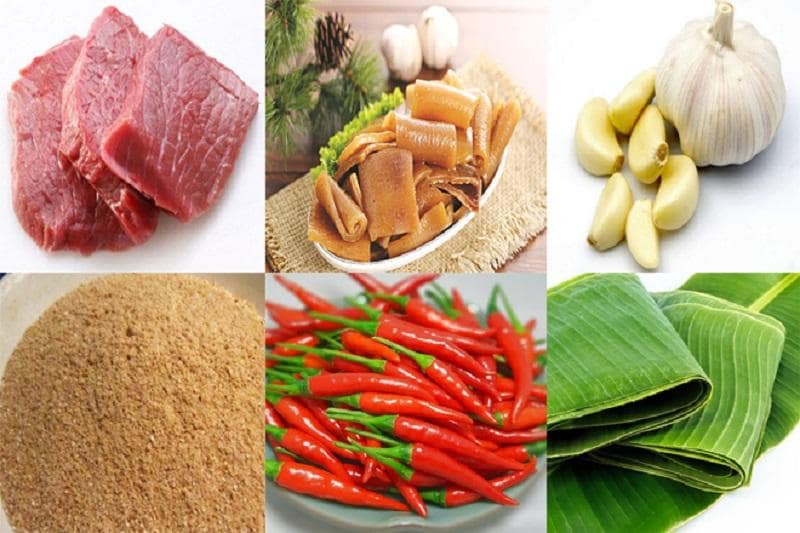Nem Chua Thanh Hóa
1. What is Nem Chua?
Nem Chua is one of the most famous and beloved specialties of Thanh Hóa province, located in central Vietnam. This dish consists of fermented pork, known for its sour, slightly spicy, and savory flavor. Unlike regular pork rolls, Nem Chua undergoes a natural fermentation process that gives it a distinctive tangy taste and chewy texture.
In Thanh Hóa, Nem Chua is not just food—it is a symbol of the region’s culinary identity and a must-try for any visitor.

2. Characteristics of Nem Chua
Nem Chua has a pink, compact appearance, often wrapped in green banana leaves and tied with thin plastic strings or bamboo. Each piece is small and neatly shaped, giving it a clean, attractive look.
The flavor is a balanced combination of sourness from fermentation, mild heat from garlic and chili, and a slight crunch from thin pork skin (bì). The meat is tender, slightly sticky, and bursting with aroma. The longer it is left to ferment (usually 2–3 days), the stronger the flavor becomes.
3. Ingredients and How It’s Made
Though simple in appearance, Nem Chua requires careful preparation and precise technique to ensure safe fermentation and delicious flavor. Key ingredients include:
-
Lean pork (finely ground)
-
Thinly sliced pork skin (bì)
-
Roasted rice powder (to help fermentation)
-
Garlic, chili, black pepper
-
Salt and sugar (for seasoning and preservation)
-
Banana leaves or plastic wrap (for wrapping)
Preparation Steps:
-
The lean pork is finely ground and mixed with sliced pork skin, garlic, chili, and seasoning.
-
The mixture is kneaded thoroughly until sticky.
-
It is then shaped into small rectangular pieces and wrapped tightly in banana leaves or plastic film.
-
Left at room temperature for 2–3 days to naturally ferment.
4. How to Enjoy Nem Chua
Nem Chua is typically eaten without cooking, making it a rare example of fermented raw meat in Vietnamese cuisine. It is usually served:
-
With raw garlic slices and fresh chili
-
With herbs and pickled vegetables
-
As a drinking snack with beer or rice wine
In some places, people grill or fry Nem Chua for a crispy variation (called Nem Chua rán), especially popular among younger eaters.
When served raw, it’s important to eat Nem Chua that is freshly made, properly stored, and produced by trusted sources.
5. Cultural Importance
For people in Thanh Hóa, Nem Chua is more than a dish—it’s a gift, a tradition, and a pride. Locals often bring Nem Chua as a present when visiting friends or traveling, and it’s a common delicacy during holidays, weddings, and family gatherings.
Making Nem Chua is also a family tradition in many villages, with each household or brand having its own secret recipe passed down through generations. It represents the clever use of local ingredients and the skillful technique of preserving food through fermentation.
Nem Chua is a culinary ambassador of Thanh Hóa, widely known across Vietnam, but only in its hometown does it have the most authentic flavor.



